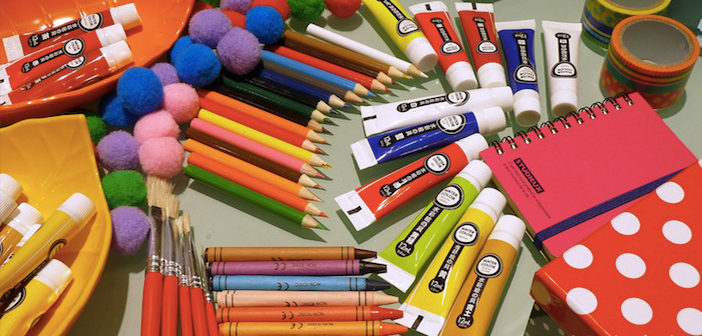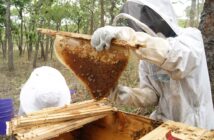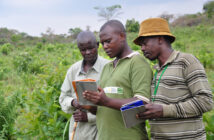When I was younger, every June I would accompany my mom, a school teacher, to her classroom and help her organize for the upcoming school year. The janitors would also be cleaning and organizing at this time. As they went through desks, trash cans, and lockers, they found tons of unwanted school supplies that were still in good shape. The janitors would make piles in the halls for the teachers to take whatever supplies they needed, and I used to go through those piles and collect school supplies for myself. Even though this sort of fun for me, I couldn’t help feeling upset about the leftover items that were sent to the landfill.
According to Boston College, “The average college student produces 640 pounds of solid waste each year, including 500 disposable cups and 320 pounds of paper.” That’s a lot of garbage!
The staggering amount of waste that we all produce affects the well-being of people, animals, and the environment. Excessive waste exposes people to harmful water, soil, and air contamination and can even cause disease. Animals can become entangled and incapacitated in items such as plastic bags, and they can also ingest harmful garbage. The environment becomes jeopardized when items, such as plastic, release toxic chemicals that leach into soil and water sources. In addition, ecosystems experience disturbances when trash invades natural habitats.
Worldwide, concerned young people are taking action to “green” their school campuses. One Roots & Shoots group decided to increase paper recycling at their school. The project began with students calculating their school’s recycling rate. Throughout the school year, the group created posters and signs for designated recycling bins and came up with weekly “did you know” facts for the school’s daily announcements. They also held a game show during lunch period. At the end of the year, the students recalculated the school’s recycling rate and discovered a 6% recycling increase! This is a fantastic example of the awesome waste-reducing changes that students are implementing at their schools.
5 Tips For A More Sustainable School Day:
1. Reduce
One way you can reduce your waste is by bringing your lunch in a reusable lunchbox and reusable containers in place of plastic wrap. Paper waste is a problem at many schools, but by taking notes on a tablet (if permitted) you’ll be able to greatly reduce your paper consumption. Plus, you won’t have to carry around a ton of notebooks!
2. Refuse
By simply saying, “No, thanks,” to an item, such as a plastic straw, you are saving one more piece of trash from heading to the landfill. One straw may not seem likely to make an impact, but over time it will really add up.
3. Reuse
Reusable water bottles, drinking straws, lunch boxes, containers, and utensils are great alternatives to single-use disposables! According to the National Park Service, “Americans use these disposable utensils at an average rate of 1.6 straws per person per day. Based on national averages, this equates to each person in the U.S. using about 38,000 straws between the ages of 5 and 65.”i By using a reusable straw, you are saving a ton of disposable plastic straws from reaching the landfill over time.
4. Recycle
Don’t throw that paper away…recycle it! According to the University of Southern Indiana, “Each ton (2000 pounds) of recycled paper can save 17 trees, 380 gallons of oil, three cubic yards of landfill space, 4000 kilowatts of energy, and 7000 gallons of water. This represents a 64% energy savings, a 58% water savings, and 60 pounds less of air pollution!” You can also upcycle used scraps of paper and make more paper!
5. Thrift
Thrifting is a sustainable and often inexpensive shopping method. Why is it sustainable? When a person buys secondhand, the items they buy are reused, and less is sent to the landfill. Thrift stores such as Goodwill, Salvation Army, or a local consignment shop are great sources for back-to-school clothes, backpacks, books, and more.
By following these steps, you will be able to increase your sustainable practices at school, and reduce the amount of trash being sent to the landfill! How cool is that? Tell us about your next sustainability project on rootsandshoots.org.
Resources
http://www.grida.no/publications/vg/waste/page/2856.aspx
https://www.bc.edu/offices/sustainability/what-you-can-do/know-facts.html






